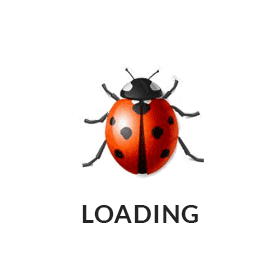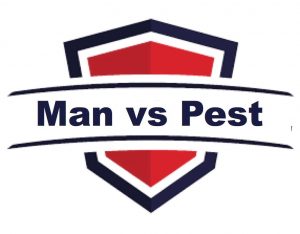

IT ESTIMATED THAT THE TOTAL NUMBER OF ANTS ALIVE IN THE WORLD AT ANY ONE TIME IS BETWEEN ONE AND TEN QUADRILLION 10,000,000,000,000,000
Ants are fascinating creatures. They have been here for millions of years and can be traced as far back to the age of the dinosaurs in the Mesozoic Era! There are over 15,000 described species of ants and we are discovering new species around the world all the time.
Ants are often regarded as “nuisance” pests in and around buildings. They may also present a health risk. There are known cases where ants were technically carrying disease organisms causing dysentery, smallpox and a variety of pathogenic bacteria, including Salmonella.

EVERY SITUATION IS UNIQUE, THERE IS NO SINGLE ANT CONTROL PROGRAM THAT WILL WORK IN ALL CASES.
EXTERMINATORS SMART WAY ‘PACCP 2000’ PREVENTIVE ANT MANAGEMENT SYSTEM BEGINS WITH A COMPREHENSIVE SURVEY AT YOUR PREMISES TO IDENTIFY THE BREEDING AND HARBORAGE AREAS.
The goal of ‘PACCP 2000’ Preventive Ant Management System is to prevent or reduce problems caused by Ants. ‘PACCP 2000’ is based on ecological, economic and social criteria and integrates multidisciplinary methodologies into Ant Management Strategies that are practical and effective to your home and/or your business while totally off-setting your ‘Carbon Footprint’ related to Ant Control.


The ant life cycle is a little more complicated because ants have special forms of ant known as alates, or reproductive ants. These alates appear in the colony from special eggs laid by the queen usually when the colony passes a certain size. These alates are larger than the worker ants and are born with wings. They are the reproductive males and young queens.
During what is called a nuptial flight, which takes place at a specific time of the year, all these alates take to the air and mate with each other, after which the male alates die and the female alates drop to the ground, break off their wings, and venture off on their own in search of a suitable place to start their new colony alone.
These now wingless queens become the official egg-laying queen of their new colony. Eventually, when the new colony gets big enough, the queen will begin to lay eggs which will turn into alates, and the process starts all over again.
| Kingdom | Animal |
|---|---|
| Phylum | Anthropoda |
| Class | Insecta |
| Order | Hymenoptera |
| Family | Formicidae |

Ants have a chemical language
They communicate through pheromones.
There is a different pheromone for every message an ant might want to deliver to other ants.
These pheromones are expelled from glands at various areas of the body
Ants also can create sounds by rapidly rubbing body parts together or in some species drumming on the ground with their head and legs, which causes vibrations which other nearby ants can perceive.
Vibrational communication in ants usually involves an attempt to excite or alarm fellow ants.
The life expectancy varies with the species
Queens usually live the longest.
Some species are thought to live only two or three years while other species like some from the genus Formica, can live for 15 years.
The record for ant longevity is held by a queen of Lasius niger who, in a German laboratory nest, lived for 29 years.
Worker ants usually live for a several weeks to months, while male ants typically survive for a single season.
Ants are a social insect from the family Formicidae. They evolved from wasp-like ancestors around 110-130 million years ago after the rise of flowering plants.
Estimated 22,000 ant species, over 12,500 species have been identified.
It estimated that the total number of ants alive in the world at any one time is between one and ten quadrillion (10,000,000,000,000,000).
Ants are believed to contribute up to 25% of the total biomass weight of land based animals. That's about the same as the total biomass of the entire human race, or equivalent to approximately 1 million ants for every human.
Ant species range in size from 0.75 mm to 52 mm (0.030 in - 2.0 in). In contrast, the smallest ant species is from Sri Lanka.
Most ants are black or red in color but some species are green or metallic.
Ants can carry 20 times their own weight.
Ants can build small colonies of less than 100 ants through to very large colonies that occupy large areas and contain millions of individual ants.
Colonies of ants often dividing up labor, but work collectively to solve problems and support the group in a similar way to how human societies work.
"Queen" ants are the head of ant colonies, they lay thousands of eggs. Male ants called "drones" have one role which is to mate with the queen. Non-reproducing female ants form castes of "workers" or "soldiers" who find food, care for the queen and offspring, build the nest, and defend the colony or attack others.
Foraging worker ants can travel up to 200 meters (700 ft) from their nest and find their way back to the colony by following scent trails left by others.
Only female queen ants and male drones, have wings. Queen ants shed there wings after mating with a male, and seek a suitable place to begin a colony.
Queen ants can live up to 30 years, the longest of any insect. Workers live for 1 to 3 years, while male drones usually only survive a few weeks.
Ants can bite or sting, bullet ants, have the most painful sting of any insect, its not fatal to humans though like the sting of the Australian jack jumper ant.
If a 175-pound human had the comparative strength of an ant he could lift almost 9000 pounds
Ants trails from nests to food source are a cause of concern
Ant infestation can cause food contamination
Some ants can bite and sting
Ants can cause contamination to surgical equipment
Various disease-causing organisms—including E. coli, Streptococcus, = Salmonella and Staphylococcus (many of which are found in feces)—have been found on some species of ants, especially in developing countries.
Copyright 2019 Exterminators . all right reserved - design by xiteb